
|
Japanese External Reverse Porro Prism Binoculars. WEBSITE MUSEUM |
|
OTHER BINOCULARS #14 & OPTICAL SIGHTS/MOSTLY MILITARY |

|
1943 WWII Nash Kelvinator U.S. Army M3 6x30 military binoculars with HMR marking |
|
My Nash Kelvinator Corporation M3 6x30 binoculars were made in 1943, and it is my understanding that Nash Kelvinator and Westinghouse made 311,263 M3 binoculars between 1942-1944, with their production lines having been transitioned from their civilian production of autos and refrigerators under the tutelage of optical firm Bausch & Lomb. Given that other letters on US military binoculars FJA was Frank J. Atwood and RLB was Roy L Bowin (military officers in charge of inspection teams /QC/ specification compliance it) is likely that HMR is similar. |


|
The green paint indicates post WWII military rebuild/ refurbishment . In addition to Nash Kelvinator, Westinghouse, Universal Camera Corp, and Bausch & Lomb also made M3 binoculars in WWII. |
|
1941 WWII Wollansak U.S. Army M5 6x30 military binoculars |
|
For my WWII marked Wollensak (M5) 6x30 binoculars issued as Australian Army property marked No2 Mk 11 binoculars see OTHER BINOCULARS #9 |
|
In May 1941, the US military contracted with the Wollensak Optical Co. (W.O. Co.) of Rochester New York for 16,900 6x30 binoculars designated M5 with U.S. property markings, including my example serial number 33080. ( Thanks to Steve Papa for acquisition assistance ! ). |
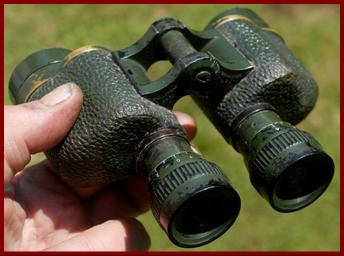



|
1942 WWII U.S. Army M6 6x30 Universal Camera Corporation military binoculars |

|
My Universal Camera Corporation M6 6x30 binoculars were made in 1942 under the auspices of the W.P.B ./ War Production Board, the U.S. Government agency created in January 1942 to coordinate the U.S. WWII military mobilization. The Universal Camera Corporation (1932-1964) was one of many U.S. companies directed to convert to war production during WWII. |


|
1942-1943 WWII U.S. Army M8 6x30 military binoculars made by Bausch & Lomb |

|
It is my understanding that the Bausch & Lomb Corporation of Rochester NY made 18,617 6x30 M8 binoculars under contract to the US Army during 1942-1943, including mine, which has a right ocular graticule/ ranging grid. R.L.B. was Roy L Bowin, who was the officer in charge of the QC/ inspection program and teams for this model of binoculars. Quality control was a great concern and problem with the rapid expansion of production and new manufacturers of US WWII military optical goods. |




|
ca 1943 WWII U.S.M.C. / U.S. Marine Corps M9 military binoculars made by Universal Camera Corp. with left ocular graticule. |
|
It is my understanding that the Universal Camera Corporation made 30,244 M9 binoculars under contract to the US Army and the US Marine Corps in 1942 and early 1943, after which the M9 production shifted to Bausch & Lomb. My example is late production, probably 1943, as it is not dated as most 1942 models were, does not have the W.P.B. (War Production Board) marking that most 1942 M9 binoculars had, and also judging by observed serial numbers of 1942 marked M9 binoculars. These binoculars have a left ocular graticule/ ranging grid (in contrast the M9 pattern binoculars that Universal Camera Corp made for UK British military contracts had a different right ocular graticule/ ranging grid). |



|
FOR OUR other U.S. M9 BINOCULARS reused by the U.S. Govt. ATTD SEE OTHER BINOCULARS #12 |
|
WWII 1944 Nash Kelvinator U.S. Army M13 6x30 military binoculars |


|
My Nash Kelvinator Corporation M13 6x30 binoculars were made in 1944, and it is my understanding that Nash Kelvinator and Universal Camera made 43,378 M13 binoculars between 1943-1944, and that these were the M3 binoculars design but with improved waterproofing and improved cement. H.M.R. is presumed a commanding official of quality control for these model binoculars, but documentation of who it was is not known at this time. |
|
WWII U.S. Army M15 7x50 military binoculars serial #18584 (No Reticule) Stock #7678143 |




|
My US Army M15 7x50 binoculars have no reticule, and have a decal stating that they have coated optics. Though there is no indication of manufacturer, I believe only Westinghouse manufacturered M15 binoculars in WWII. Regardless, the lenses were probably made by Bausch & Lomb. US government oversight optics production mandated a cooperative effort among manufacturers during that period. |
|
WWII U.S. Army M17 7x50 military binoculars with left ocular reticule. |
|
According to Bob Womack, 54,412 of my US Army M17 model binoculars which were produced only by Westinghouse using Bausch & Lomb and Optical Research Co. produced lenses, with this model being similar to the M15 model but with a left ocular reticule/ ranging grid. There was also a separate M17A1 model. my M17 7x50 binoculars are quite heavy at over 3 pounds, and are quite large at nearly 8 inches by 8 inches, and were obtained in a leather mod 24 carrying case. |

|
1944 US Nash Kelvinator M-16 WWII 7X50 Military Binoculars |
|
My WWII US military M16 7x50 binoculars were apparently made in 1944 by Nash Kelvinator (the company being a 1937 merger of Nash Motors Co and Kelvinator Appliance Co). My binoculars came in an original green color, and with a horizontal and vertical ranging grid in one ocular, which is not uncommon for military binoculars. The US badly needed binoculars early in WWII. So naturally they got car and refrigerator makers to make them! |






|
The US Army M19 binoculars design was developed in 1955, with left side graticule/ ranging grid, and produced ca 1975-1980’s. These binoculars were designed to be field serviceable by replacing pre-adjusted modules, as shown by the ring attached ocular assembly. |
|
US Army M-19 7x50 Military Binoculars with Graticule/ Ranging Grid |



|
My understanding is that various optical components of the M19 binoculars were made in Japan, but “assembled” in the USA. |
|
My two FUJINON M22 7x50 US Army Binoculars NSN 1240-01-361-1318, plus my civilian model |



|
My first Fujinon 7x50 M22 US Military binoculars were made under a US government contract fulfilled by aeronautic and defense prime contractor Northrop Grumman, who subcontracted to Fujinon, with some U.S. content labor conformity by Kama-Tech, who specialized in that. The NSN (National Stock Number) for this binocular (designated model 12950938) was created July 9, 1992, and the US Army, Navy, Air Force and Marines could purchase under this NSN. Historic government pricing was $1,385.10 to $2,308.50 ! My first pair of M22 binoculars were equipped with KillFLASH anti reflection shields, being an ARD (Anti Reflection Device) manufactured by Tenebraex Corp. of Boston, Ma. with their “SEE NOT SEEN” trademark. These binoculars have a vertical and horizontal ranging grid, and are presumably nitrogen filled. These contract binoculars do have internal laser interference protection filters against targeting and range finding lasers (Nd:YAG lasers usually with a 1064 nm wavelength). These laser filters do reduce light transmission in binoculars by around 10% and make the view through them not color neutral but with a blue hue. I can absolutely confirm this, because I also happen to have the near identical civilian Fujinon 7x50 version of these same binoculars (marked as military spec) but without the laser protection, and I do prefer those for use as being somewhat distinctly brighter and also without the blue tinge of these military contract binoculars, (though both are really quite good ). |



|
M22 binoculars in U.S. military use. |
|
detail of ARD anti reflection grid |
|
2013 U.S. Army Military L3 Contract 7x28 M-24 Military Binoculars NSN 1240-01-602-8216 |
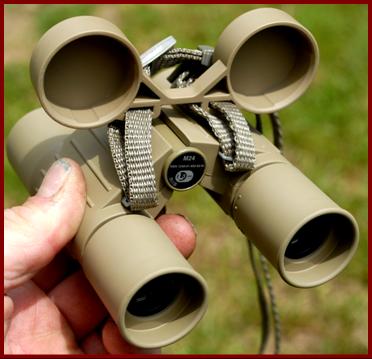

|
While the 7x50 M-22 military binoculars have been the current primary US Army and Marine Corps binoculars since around 1992, my smaller pocket sized M-24 7x28 binoculars have also been supplied to the U.S. Army and U.S. Marine Corps starting around 2005. My M-24 binoculars were purchased as a new and unused military surplus contract over-run item tied to NSN (national stock number) 1240-01-602-8216 which had an order value of $2,081,640.00, per 9700: DEPT OF DEFENSE, W56HZV: W4GG HQ US ARMY TACOM, DCA Definitive Contract, ONE-TIME BUY FOR 6225 M22 BINOCULARS SOLE SOURCE TO L3 COMMUNICATIONS. 1240: OPTICAL SIGHTING AND RANGING EQUIPMENT, W56HZV13C0037, W56HZV12R0505, Monday, October 22, 2012, and their box has a 12/2013 date. These binoculars have internal laser protection. An ARD (anti reflection attachment) was an optional accessory item available for these. |
|
M-24 US Military 7x28 binoculars being used by US troops in Afghanistan . |

|
L3 Communications Holding Inc. of New York was the US govt. defense contractor who supplied my binoculars. |

|
Pre WWI or WWI 1910 model Ross British Navy ? 6 Power Military Binoculars |




|
The British firm of Ross introduced my bronze military model binoculars in 1910, and mine with their integrated elaborate broad arrow metal filled markings were a military contract that I think predated WWI (speculative). I do associate the large yellow broad arrows on the body as indicating Royal Navy use, and unlike the later recessed painted markings of the type, these appear to be flush yellow leather inserts. The NPL18 marking is a military proof or inspection mark (per Hans Seeger). Generally as WWI progressed the more elaborate pre war markings were simplified to stampings to speed production and save costs. |
|
1943 Anchor Optical Co. US Navy Bureau of Ships Mark 32 Mod. 7, 7x50 Military Binoculars |


|
Anchor Optical Corp of NY was one of 6 companies to whom leading US optical company Bausch and Lomb licensed their designs, and who they assisted to gear up and produce US military binoculars in WWII under US govt. supervision (per Company Seven). My 1943 Anchor Optical Co US Navy 7x50 Mark 32 Model 7 ser # 241769 binoculars are typical of these. BuShips was the US Navy Bureau of Ships, which was created in June of 1940. These binoculars were acquired in a Bausch & Lomb marked hard rubber military binoculars case made by Hood. |


|
Wollensak factory in WWII on Hudson Av. |
|
1925 Barr & Stroud No2 Mk I British Military Binoculars |



|
My 1925 dated Barr & Stroud British Military Binocular Prismatic No.2Mk I binoculars were made by the Scottish firm in the inter war years, which is less common than war years production , and are broad arrow British military property marked. They would have originally been painted black. |

|
Pre 1940 Hensoldt Wetzlar Dienstglas 6x30 German Military Binoculars Serial number 384024, Captured in Stalingrad and acquired from Russia |



|
My Hensoldt Wetzlar Dienstglas 6x30 binoculars with graticule predate 1940, when German manufacturer’s letter codes were instituted, and maker names/ logos discontinued, to obscure factory output levels for targeting. These binoculars were purchased in Russia as a Stalingrad capture. Certainly few Russian soldiers in WWII failed to scoop up any functional binoculars they had the opportunity to grab (nor did any American soldier in either of the World Wars). These binoculars have two deep stampings on the pivot arms which I assumed to be Waffenampt acceptance marks, though they do look a bit different than what I am used to seeing as Waffenampts? And I can’t discern a number, even when enlarged a lot. The Waffenampt for Hensolt & Sohne Optische Werke A.G. 1939-1942 was “WaA414”. |

|
The “M” marking indicated use of metric faceplate screws, and the H/6400 is type of strichplatte/ graticule in terms of number of artillerie promille units in circle, such that a 2m object covering 1 unit is 2km distant. (credit Pinac) |
|
1970? Carl Zeiss Jena East German NVA/Nationale Volksarmee der DDR 7x40 Military Binoculars |

|
Even with around 1,500 or so binoculars to choose from, when I want to look at something with binoculars I normally grab one of around 6 binoculars, and that includes these rubber armored East German Carl Zeiss Jena DF 7x40 military binoculars. These were made for the East German NVA (National Volksarmee) and are NVA marked. Based on the serial number I think these were made in 1970, with the model produced from around 1968-1981. The eye cups were designed for gas mask use. |

|
These binoculars have a knob to rotate an active night time IR light detection filter into the field of view, charged by placing the binoculars in sunlight. |

|
These binoculars have a port with a dovetailed slide on accessory reticule illuminator for using the right ocular reticule/ strichplatte/ ranging grid at night. |

|
NVA soldiers with these type binoculars |



|
Pre 1940 Hensoldt Wetzlar Dienstglas 6x30 German Military Binoculars Serial number 239981 |
|
My second pair of Hensoldt Wetzlar Dienstglas 6x30 binoculars are earlier, but similar to, my example above, but these have filled metallic markings and no visible Waffenampt. The Dienstglas military property mark has been defaced and painted over, suggesting having been brought home by a German from service during the war. It came with a 1938 dated Venditor bakelite military case. |









|
My M-24 binoculars instruction manual |
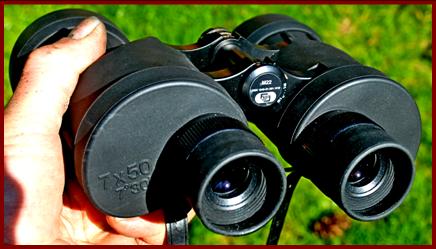

|
My second pair of US Military M22 7x50 binoculars have slightly different markings (Fuji Logo, and not contracted through Northrup Grumman). Same NSN & Kama Tech labor. |
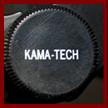


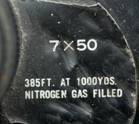
|
My civilian Fujinon Inc. 7x50 Mil Spec version of the military M22 binoculars. Nice optics but crappy applied silk screened plastic identification panels. |
|
NON MINIATURE BINOCULARS AND OPTICS: MOSTLY MILITARY |
|
USMC / U.S. Marine Corps 328MC Tasco 7x50 Military binoculars |
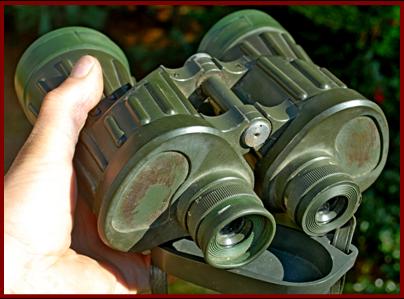

|
I believe that my Tasco USMC 7x50 rubber coated Japanese made binoculars are a batch of essentially Tasco civilian 7x50 Marine (waterproofed) binoculars bought through a prime contractor (no bid) with minor mods like the USMC and model 328MC pivot markings. (speculative). My understanding is that these were probably made by contract Japanese binocular manufacturer Katsuma Kōgaku Kōgyō K.K./ Katsuma Optical Co. and sold by a variety of importers under various brand names, probably around the 1970’s/ 1980’s (speculative). My example is missing it’s aluminum data plates, but I have shown what the missing Tasco plates looked like from another pair. |
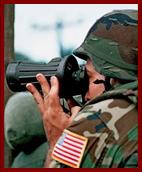



|
MONTHLY NEWLY ADDED ITEMS ARE INSERTED THROUGHOUT THE SECTION AND NOT NECESSARILY ON THE LAST PAGE. Redirected search such as google image may display old content or distortion: try a refresh and or go directly to the site : http//www.miniaturebinoculars.com |
|
|
|
In addition to Universal Camera Corp, Bausch & Lomb also made M6 binoculars in WWII. |
|
I believe only Wollenak made M5 binoculars in WWII. |
|
In addition to Bausch & Lomb, Universal Camera also made M8 binoculars in WWII. |
|
Bausch & Lomb, and Nash Kelvinator also made M9 binoculars in WWII. |
|
Bausch & Lomb, and Westinghouse also made M9 binoculars in WWII. |

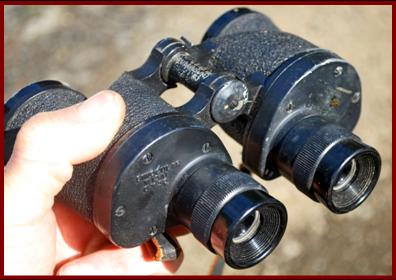



|
WWII U.S. Army M13A1 6x30 military binoculars |
|
My US Army M13A1 6x30 binoculars were a successor model to the M13 model with improved waterproofing. My
|

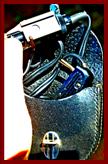
|
After some years I was able to obtain the accessory reticule/ strichplatte illuminator with case. These are uncommon and hard to find. |
![Text Box: CLICK ON PAGE LINE. CLIQUEZ SUR LA LIGNE DE PAGE. KLICKEN SIE AUF SEITENZEILE. HAGA CLIC EN LÍNEA DE PÁGINA..[ページ行]をクリックします。НАЖМИТЕ НА СТРОКУ СТРАНИЦЫ. ALSO SEE INDEX.](image3473.gif)